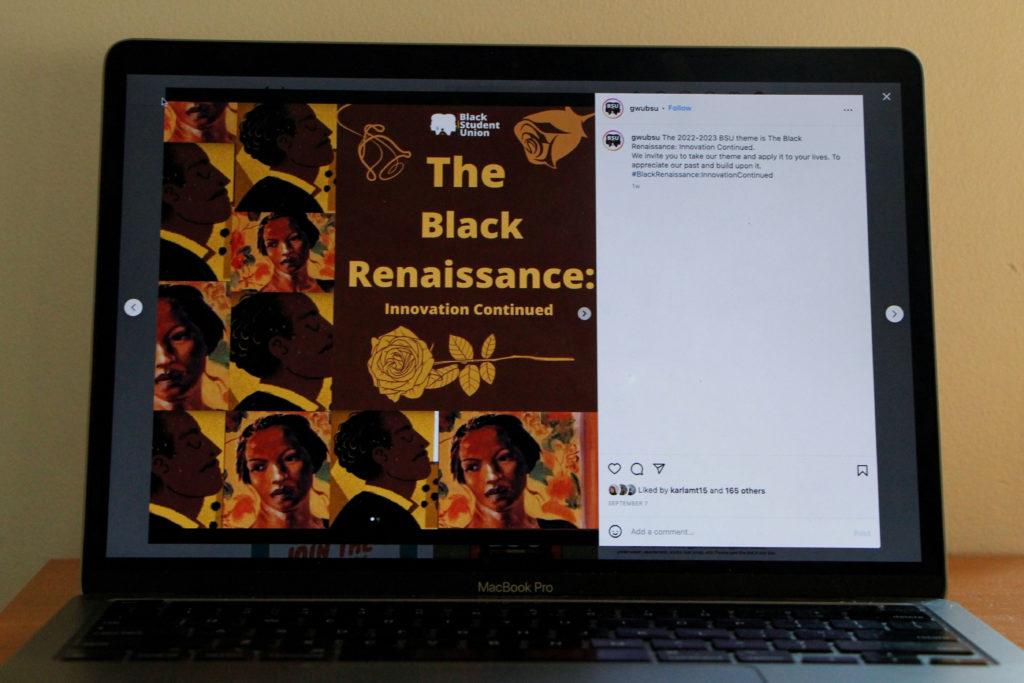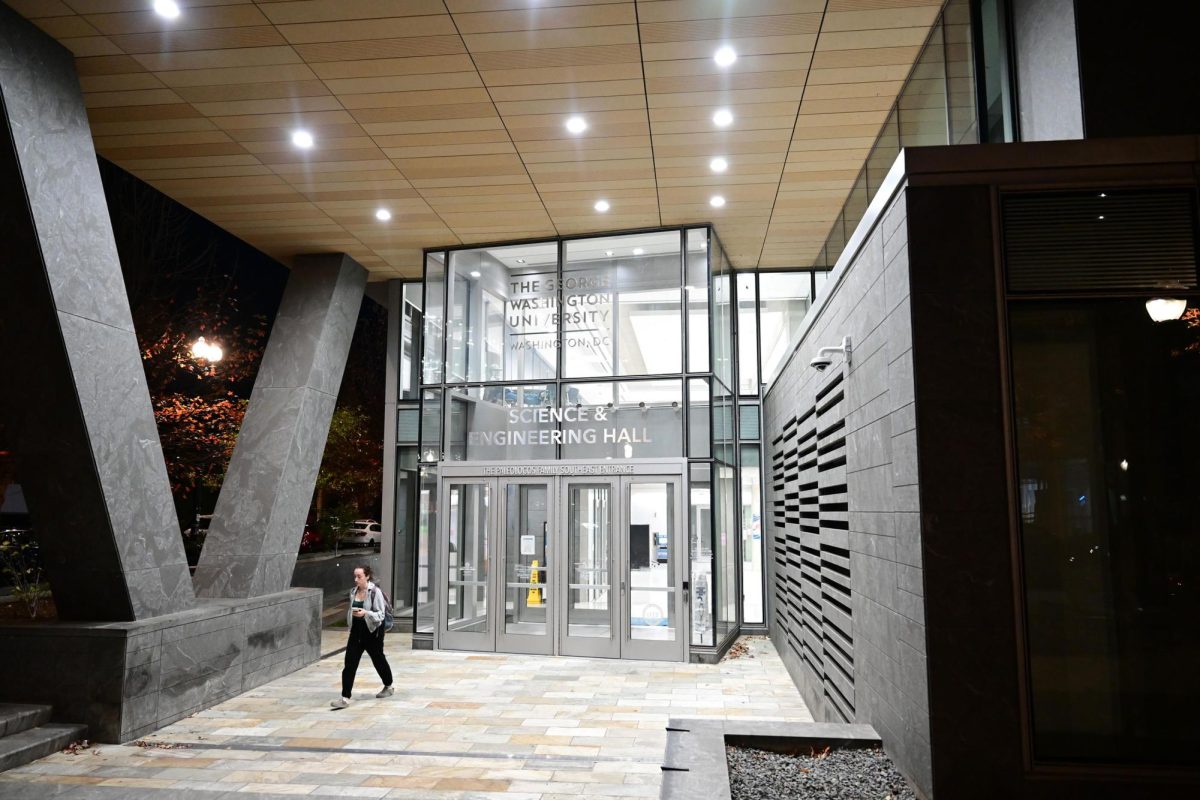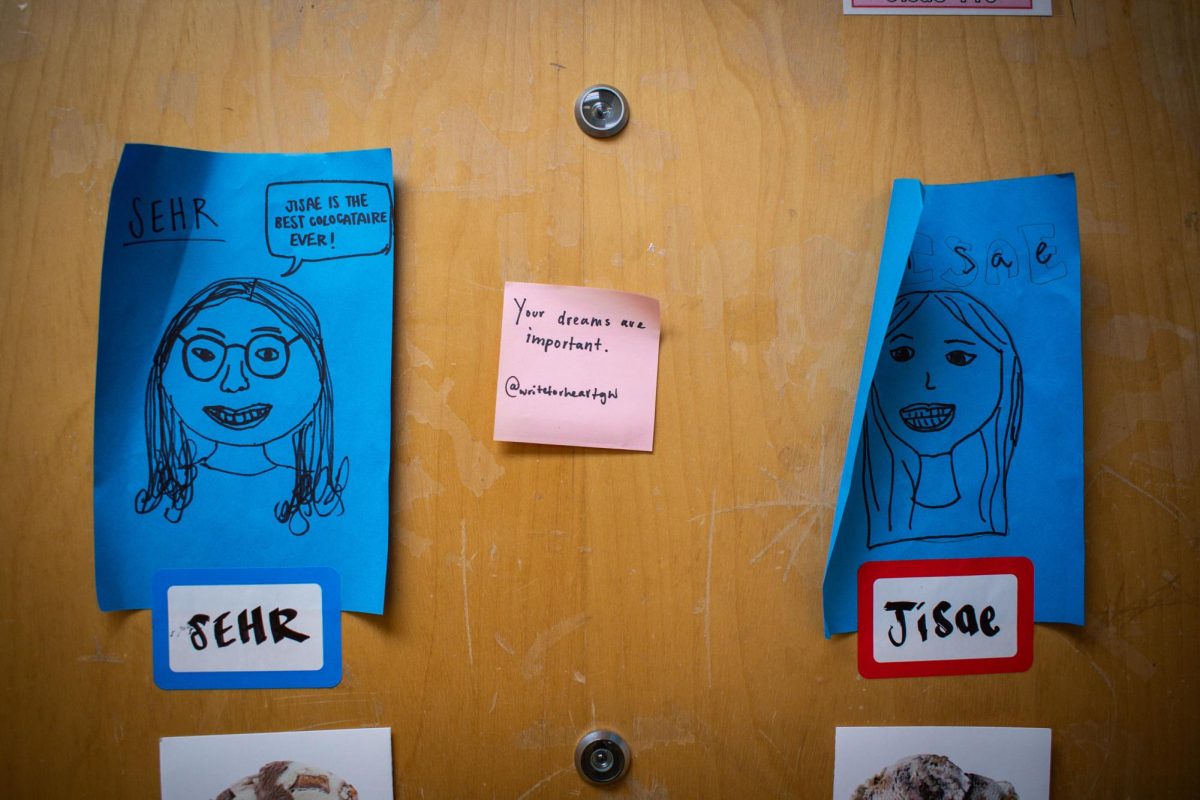Updated: Tuesday, Sept. 20, 2022 at 12:48 p.m.
The Black Student Union’s annual theme for the academic year is drawing inspiration from the Harlem Renaissance to replicate the innovation that came from Black artists during a historic period of creativity.
BSU leaders said this year’s theme of “Black Renaissance: Innovation Continued” will motivate students to draw inspiration for fresh ideas from creative outlets, like writing or dance. They said the theme centers on the Harlem Renaissance – a period rich in Black cultural and artistic achievements during the 1920s and 1930s – and will feature a showcase of contemporary and archived student art and monthly community service at Martha’s Table, a nonprofit that provides food and education to D.C. families.
BSU President Gianna Cook said students will find an outlet to be their most authentic, creative selves on campus through the new theme that honors a time period when Black creatives felt empowered to influence and “bounce off each other,” whether it be through art or questioning the status quo.
She said the title “Innovation Continued” aims to inspire Black excellence on campus following last year’s theme of “Elevation Amplified,” which worked to elevate Black student voices through relationships with administrators and student events during the first year back on campus since the COVID-19 pandemic. She said BSU hopes to continue to build a Black community on campus that allows students to push boundaries in their day-to-day lives through a steady exchange of ideas in class and in-person social engagement around campus, like at Kogan Plaza.
“We’ve always been innovative, we’ve always been striving for this creativity, and it’s not starting over,” Cook said. “I love that we’re also able to bring it to light not only to our community but to other communities in GW as well.”
Cook said BSU is currently planning events like a kickball game with American University’s BSU chapter on the National Mall later this year and a Thanksgiving dinner with the Undergraduate Black Pre-Law Association and BSU chapters from GW Law and the School of Medicine and Health Sciences. She said she hopes events like these will develop “collaboration” between BSU and other student organizations to amplify a sense of community under the “Black Renaissance” theme.
“I think that as students, we’re always working, networking,” Cook said. “But how can we connect together and make those meaningful connections through creativity, through ideas, through fellowship and through those recreational activities? So that’s what we’re really working towards.”
Cook said the Black Renaissance theme encourages students to model how Black creatives had their ideas “propelled by everybody around them” to produce formative work and build the courage to create new norms, but she said the theme reaches far beyond music or art. She said she wants students to apply the theme to their own lives this year and feel motivated to think outside of the box and challenge themselves.
“I want them to know that innovation can start with them,” Cook said. “And that whether you’re a freshman, sophomore, junior, senior, Black or not Black, that you somehow see that there’s something valuable that you have to offer the GW community.”
Drew Dodd, the executive vice president of BSU, said he is looking forward to BSU’s upcoming art showcase during the spring semester as an opportunity to reflect on Black successes on campus among past generations of Black students and those currently attending GW. He said he worked with BSU Historian Ryan Titus to pull archived photographs of past BSU members attending events or sporting their style in addition to artwork they created, which inspired this year’s theme and will appear in the art showcase.
“We’re not the first people here who are doing what we’re doing,” Dodd said. “So when I saw the pictures that Ryan sent to me from our archives, it was honestly just an inspiring moment to see Black people in our school.”
Dodd said starting last year, he noticed a Black Renaissance that started to take form at GW when his peers began to tap into their own creativity by producing art or showing off their style. He said he hopes to build off this innovation on campus through this year’s theme to highlight a time when Black art was appreciated and inspired others to harness creativity.
“Yes, we are talking about the Black Renaissance, and that’s a completely separate time in history, but we’re also talking about the Black Renaissance at GW and acknowledging the past and building on that with the creatives that we have on campus now,” Dodd said.
He said attending a predominantly white institution can produce obstacles to creative expression for Black students, but he is interested in gaining a glimpse of history through the artistic work dating back to the 1960’s that will be presented in the showcase.
“I know for me coming to a PWI, it can be a little bit challenging just to feel a little bit out of your depth, so I can’t imagine how they felt 20, 30, 40 years ago, but it’s admirable,” Dodd said. “I think a big part of the idea of the theme was just the acknowledgment that there were people before us.”
Titus said the new theme makes her feel “proud” and “empowered” in her role educating students about the relevance of Black history to their lives. She said she hopes students excel in their own talents by learning from the successes and failures of figures from the Harlem Renaissance like poet Langston Hughes, who inspires her by his ability to show the universality of the Black experience.
“It is up to us to use what we have learned from them and improve ourselves,” Titus said in an email.
Telease Bowen, the co-chair of the annual Black Heritage Celebration, said this year’s theme offers students a time to explore their passions and reflect on the creative outlets that appeal to them to spark “Black joy.”
“I hope that students take this time to reflect on what makes them happy, joyful and really get back to those things, whether that’s knitting or drawing or painting,” Bowen said.
Joanna Destil, BSU’s vice president of marketing, said she hopes the upcoming year will allow students to serve as inspiration for one another. She said she hopes students recognize that failing is a part of the creative process that the Black Renaissance theme advocates for through its focus on innovation and inventiveness.
“It is okay to fail, and by failing you will succeed,” Destil said. “There’s ways you can succeed.”
This post has been updated to correct the following:
The Hatchet incorrectly reported that local nonprofit Martha’s Table provides shelter to D.C. families. That was incorrect. We regret this error.








